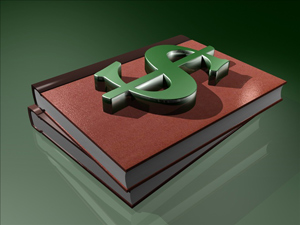FCNNEWSSOURCE

WASHINGTON – According to a Center for American Progress analysis, students who went into more debt to finance their education during the Great Recession are less well off today and Blacks and Latinos are particularly hit hard.
The center analysis released May 3 was based on the latest data from a survey conducted from the Federal Reserve of households in 2007 and 2009. The results show “even less economic security today for those who went deeper into debt to pay for their education in those years,” the center reported.
“The largest increase in the median education debt amount–$5,715–occurred among African-American households. Households of other races and households with a high school degree also saw comparatively large increases in education debt. That is, households that disproportionately struggled due to higher unemployment, lower wages, and fewer benefits than their counterparts, such as African Americans, saw faster debt increases than their counterparts,” the center noted.
“It is possible that struggling groups were more willing to go deeper into debt than their counterparts in an effort to regain some economic security during the difficult labor market during and after the Great Recession,” the analysis continued.
But rising education loans “put many student loan borrowers, especially communities of color, into an economic bind, making it more difficult to climb out of a deepening hole. Allowing interest rates on new student loans to climb without countervailing measures will thus put additional pressures on an increasingly struggling middle class that continues to need to borrow to attend ever more costly colleges and universities,” the report warned.
Without congressional action interest rates on federally subsidized student loans will increase on July 1. President Obama and Republican leaders have expressed a desire to avoid the higher interest rates.
“The number of borrowers and the typical loan amount grew amid the most recent economic and financial crisis. This is especially stunning since the expansion of education debt occurred at the same time that other credit markets, especially mortgages and credit cards, contracted. Households went deeper into education debt during the crisis as other forms of credit became less prevalent,” according to the report.
It added, “Mortgages and credit cards declined as households repaid their debt and banks foreclosed on bad debt. But the same was not the case for education loans. Education loans typically cannot be discharged in bankruptcy, which may explain why education debt didn’t fall like other forms of debt did. But there are other factors at work, too. The summary data illustrates that education loan borrowers became economically less secure during the crisis because they had more debt–education and noneducation–after the crisis than before. There were also generally more households with education loans and the amount owed on education loans went up during the crisis.”
Education loan borrowers in 2009 were less wealthy after the crisis than in 2007, the report found. The wealth of the median borrower dropped from $45,280 (in 2009 dollars) in 2007 to $28,160 in 2009. “The share of education loan borrowers with no wealth–defined as either debt equal to total assets or, more likely, no assets and no debt–or negative wealth went from 28.7 percent in 2007 to 35.6 percent in 2009,” the report said.












